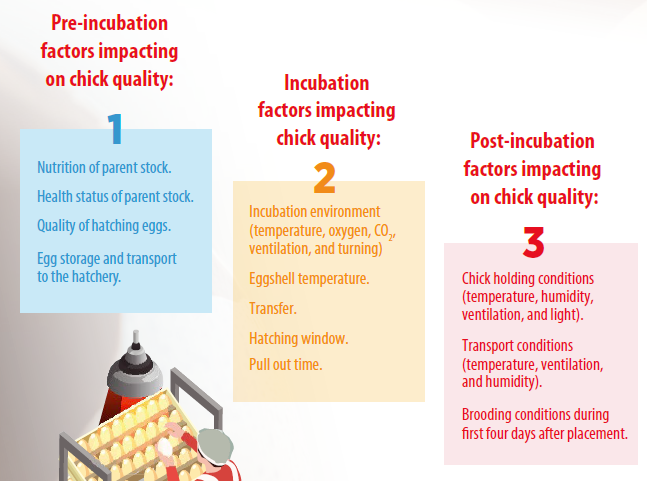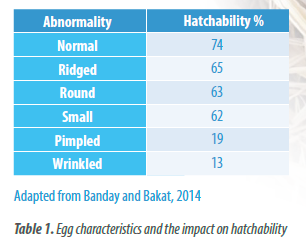
Animal Health & Pathology
Chick Quality – Part I
To read more content about AviNews International December 2024
Animal Health & Pathology
To read more content about AviNews International December 2024
Content available at:
Indonesia (Indonesian) Melayu (Malay) ไทย (Thai) Tiếng Việt (Vietnamese) Philipino
It is told that first impression is critical, and in our industry this is related with chick quality at arrival. Having this in mind, it is very important to have the procedures and tools to help us evaluate chick quality at hatchery and at arrival on the farm and with that information we can make the corrections to improve it.
At the hatchery is critical to understand if the incubation conditions were optimal and when necessary, make corrections and assure the best quality is sent to our customers.
On the other hand, during placement is important to not only assets the incubation conditions but also to check if both holding and transport conditions were optimal, and furthermore to be sure we are receiving the best quality.
The purpose of this technical document is to provide guidance to hatchery and farm managers to evaluate chick quality. This document is arranging the factors in three categories: preincubation, incubation and post incubation.

As you can imagine, chick quality starts at the breeder farm. In this technical document we will review the most important factors impacting the quality and how the hatchery managers at hatch and farmers at placement can evaluate it.
PRE-INCUBATION FACTORS IMPACTING ON CHICK QUALITY
1. Management on the farm
For example, poor feeding management affecting performance and eggshell quality.
2. Age of the PS
As the flock ages the eggshell quality decreases. While hens younger than 30 weeks of age could produce more immature chicks which require the best brooding conditions (thermoregulatory system development) hens older than 67 weeks produce poorer quality eggs (eggshell and internal quality).
3. Health status of the PS
Any disease impacting on eggshell quality and/or internal quality (infectious bronchitis), and chick quality and livability (salmonella, Escherichia coli, mycoplasma, chicken anemia virus, avian encephalomyelitis etc.). Therefore, it is important to have a monitoring plan and evaluate the status of these diseases.
4. Feed quality
Is critical to follow the recommended levels of vitamins and minerals from the management guide. Not following them could decrease chick quality, fertility and/or hatchability.
5. Water quality
Suboptimal water could carry diseases, toxins, or high levels of minerals. A constant water disinfection is critical to prevent bacteria or viruses. It extremely important to check periodically the microbiological and mineral quality of the water.
6. Characteristics and quality of hatching eggs

When incubating dirty egg there is always risk of hatching chicks that may have high morality due to bacterial diseases (see Graph 2 and Table 2).
Egg storage: the longer the storage the poorer the chick quality. Research done by Tona (2003) showed the longer the storage time of hatching eggs the poorer the chick quality (see Graph 3). In addition, the body weight gain at 27 days after placement is lower in chick hatched from eggs stored for a long period (> 14 days). Short Period of Incubation During Egg Storage (SPIDES) can be used to mitigate the impact of long storage.
Transport the hatching eggs in clean and disinfected truck. Designated only for hatching eggs transport. The temperature should be within the range of 18 to 22°C and relative humidity between 40 to 60%.
Condensation on the eggshell must be avoided at all costs because moisture on the eggshell impairs the natural mechanism of defense of the egg against microorganism and provide optimal conditions for microorganism multiplication. The table below can be used to predict if condensation will occur when no additional measures are taken.
In part two we will cover pre- and post-incubation factors that affect chick quality. Stay tuned for the next edition.